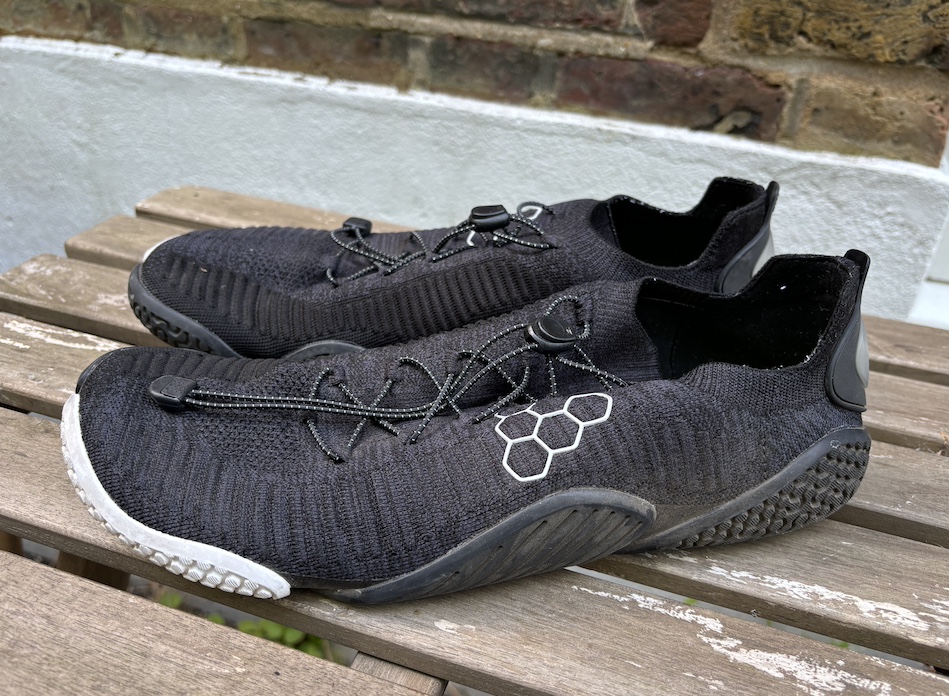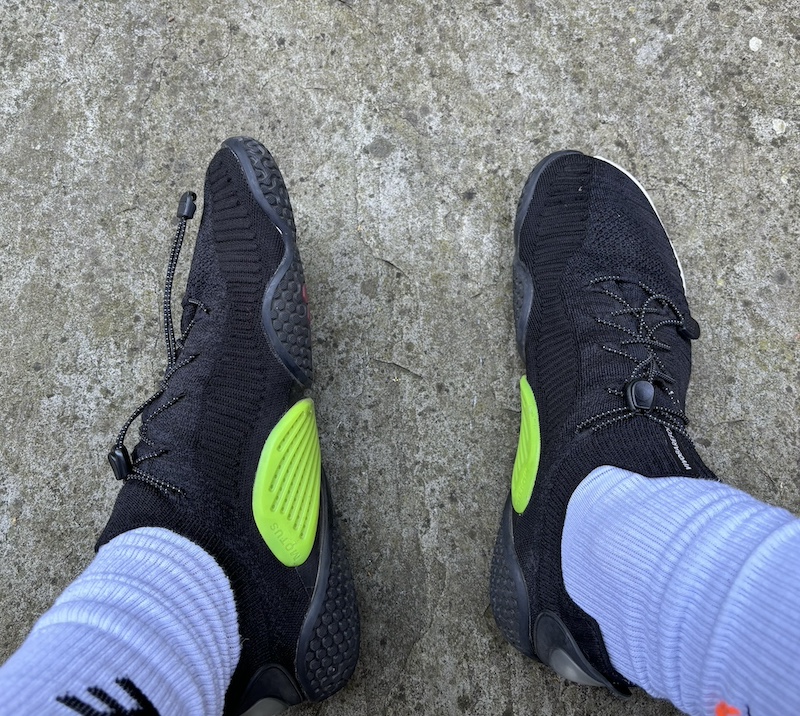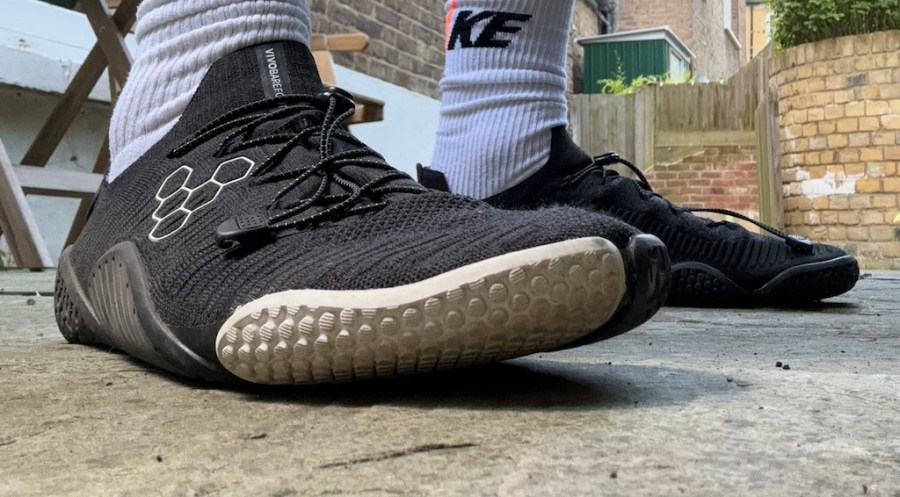Vivobarefoot’s latest minimalist shoe is more flexible than ever, but it’s the natural stability that impresses most.
Vivobarefoot has undergone an impressive transformation. Just a few years ago it was a niche and fairly eccentric minimalist footwear brand, but these days you’re just as likely to see its flat-bottomed gym shoes on the soles of elite CrossFitters and bodybuilders as you are festival-going eco advocates.
That move into the gym world is no mistake. The USP of specialist lifting shoes is always the flat, stable base, and Vivobarefoot’s argument is that there’s nothing more stable than the foot itself – with its shoes providing just a touch more grip and thin layer of protection. So following on from a shoe I’m a big fan of, the Motus Strength, we now have the Motus Flex, which I’ve been putting to the test for the past couple of months.
Men’s Fitness verdict
A flat, stable base makes these perfect for weight lifting, while the stretch-knit upper fits the foot like a glove. For running or more dynamic workouts, more cushioning may be preferred.- Lightweight and flexible design for enhanced mobility
- Flat, stable base for compound lifts
- Comfortable stretch-knit upper
- Made from recycled materials
- Minimal lateral support less suited to high-intensity dynamic movements
- Limited color options available
How we test the best gym shoes
Our expert kit testers spend at least a month with each pair of gym shoes. They put them through numerous gym workouts to see how they coped with cross-training, HIIT, mobility and strength training sessions. They then rate each shoe on fit, comfort and performance before awarding it an overall score.
First impressions of the Vivobarefoot Motus Flex
Straight out the box, there’s a bit more going on design-wise compared to the Motus Strength. My Obsidian pair sport a white brand logo and the ultra-thin rubber outsole – split into two parts to increase flexibility – is coloured one-part lime green, one part white.
The shoe features the brand’s trademark wide toe box – allowing your toes to spread naturally to improve balance and provide a more stable foundation – and up top there’s a stretch-knit upper designed to fit the foot like a glove.

Lifting performance
I’ll admit that I’ve long been a fan of Vivobarefoot shoes for weight lifting. My time in the gym generally involves a mix of conventional strength training and machine-based cardio (usually the rower or stationary bike) and for that, I think barefoot shoes are perfect. If you’re someone who does a lot of HIIT classes, or a more fast-paced and dynamic combination of movements, you might prefer shoes with a touch more cushioning or lateral support.
But in my workouts with the Motus Flex I’ve been happy to find that stable base still in full effect. Unlike the Motus Strength, which features a solid block of thin rubber outsole, with the Flex, Vivobarefoot has ‘decoupled’ the rubber (separated it into two parts). The main aim of that is to improve flexibility – you can literally roll the shoe up into a ball – for activities like calisthenics and yoga, but I think it’s made the shoe more stable, too. Perhaps it’s because my toes can grip into the floor more – particularly during squats, deadlifts and overhead presses – or maybe because there’s an extra 0.5mm of rubber sole, with 2.5mm compared to the Motus Strength’s 2mm.
Whatever the reason, the Flex delivers a lightweight platform that flexes with your every move. This shoe excels when it comes to compound lifting, offering a flat foundation with enough grip to keep you grounded and in control. And the zero-drop build – where the heel and forefoot are at the same level – promotes good posture, which helps keep your form on point.
Can you run in the Vivobarefoot Motus Flex
Personally, this is where I draw the line with ultra-minimal footwear. For working out, and walking to and from the gym, I’m a bona fide barefoot convert, but my less-than-sprightly running style – more buffalo than gazelle – isn’t particulary joint-friendly, so I’m happier with a bit of cushioning underfoot. That said, Vivobarefoot shoes are designed to promote natural foot movement and provide sensory feedback, and the hotly contested minimal vs maximal running shoe debate is proof that there are many runners out there who swear by their barely-there kicks.
However, I’d definitely caution against attempting to run before you can walk with the Motus Flex or any other barefoot shoe. If you’ve never worn a shoe like this before, just walking down the street will feel very different, in that you will actually be able to feel a lot more. Transition gradually to prevent injuries and allow your feet to adapt and strengthen.

Are the Vivobarefoot Motus Flex worth buying?
The Motus Flex (buy now) provides a comfortable, flexible, and supportive platform for weight lifting. While its sister shoe, the Motus Strength, is marketed more towards strength training, I appreciate the ever-so-slightly bolstered outsole (0.5mm) of the Flex, and the two-part construction couples with the trademark wide toe box to give the feet even more freedom to grip, stretch and, well, flex.
For my money, the only major sticking point is the cost. Vivobarefoot’s ‘less is more’ philosophy is one I can absolutely buy into, but there’s no doubt £165 is a big price to pay.
| Features | Breathable mesh upper; Ortholite insole; Motus Flex outsole; Made from vegan materials |
| Weight | 266g (UK size 8) |
| Colors | White Space Dye; Obsidian; Bright White |







